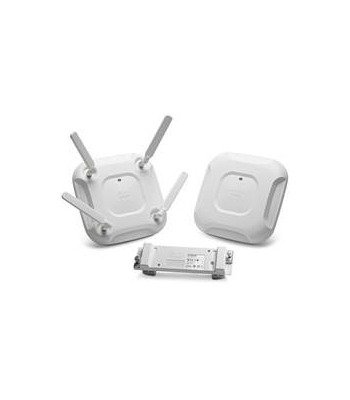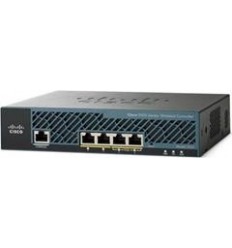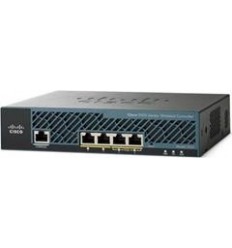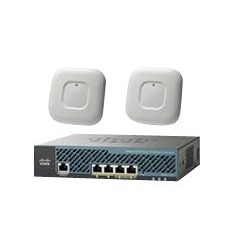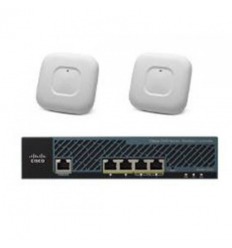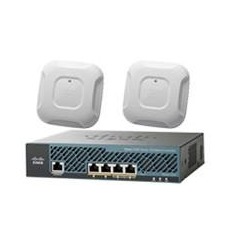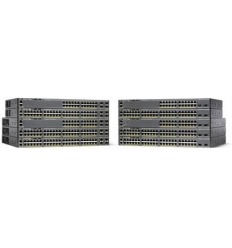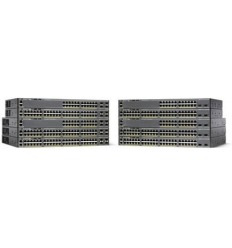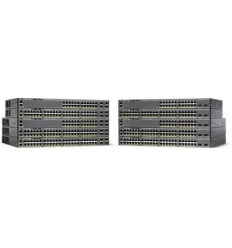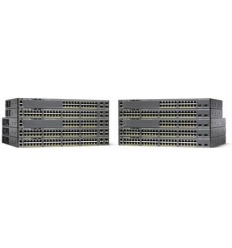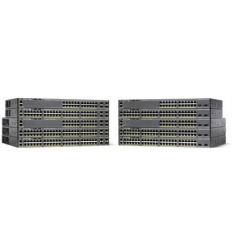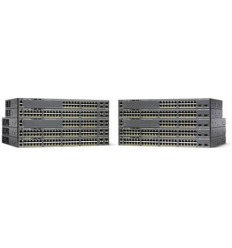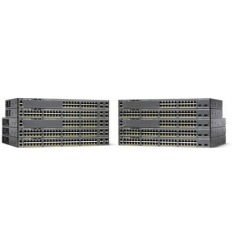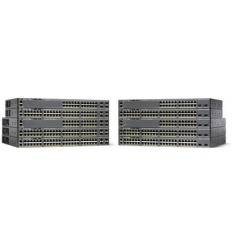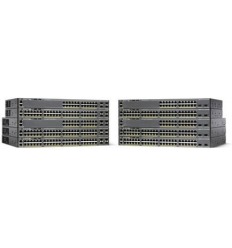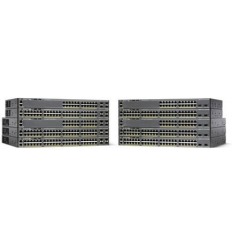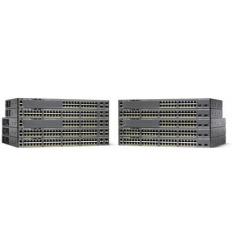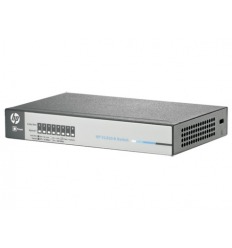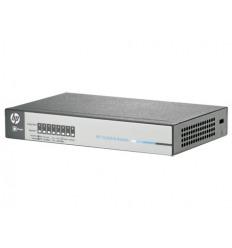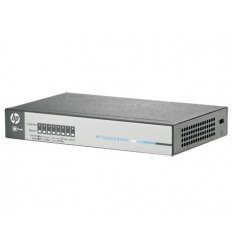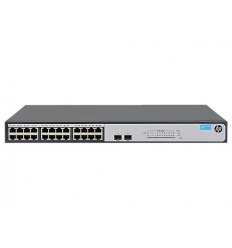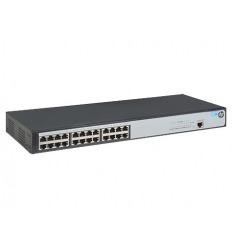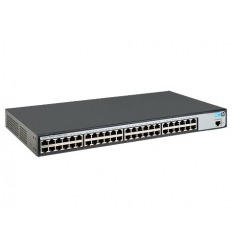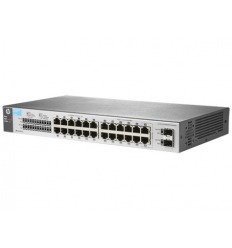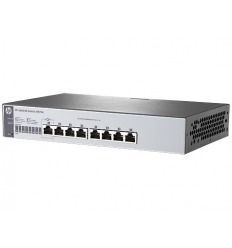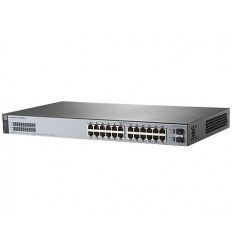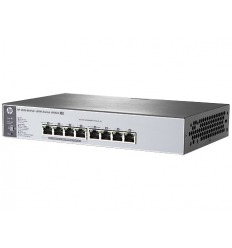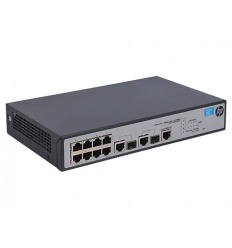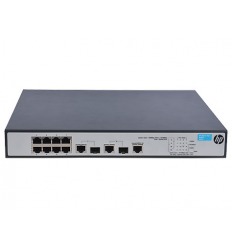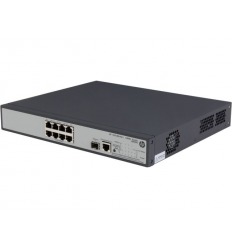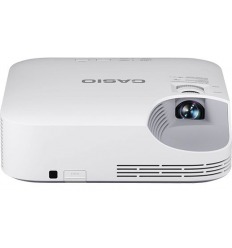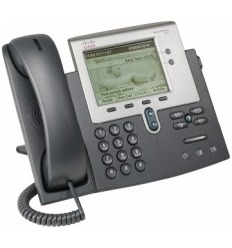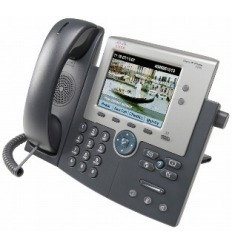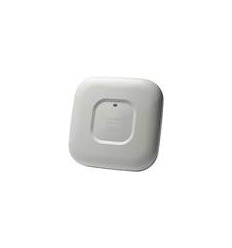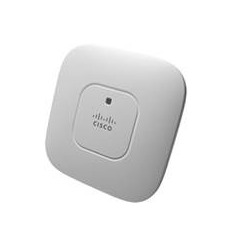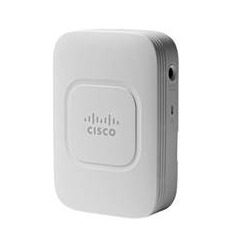In its first implementation, 802.11ac wave 1 provides a rate of up to 1.3 Gbps, roughly triple the rates offered by today’s high-end 802.11n access points. This provides the necessary foundation for enterprise and service provider networks alike to stay ahead of the performance and bandwidth expectations and needs of their wireless users.
With the industry’s only enterprise class 4x4 MIMO, three-spatial-stream access points that support the IEEE’s new 802.11ac specification, the Cisco®Aironet® 3700 Series delivers industry-leading performance and a High Density Experience (HD Experience) for both the enterprise and service provider markets. The Aironet 3700 Series extends support to a new generation of Wi-Fi clients, such as smartphones, tablets, and high-performance laptops that have integrated 802.11ac support.
In its first implementation, 802.11ac wave 1 provides a rate of up to 1.3 Gbps, roughly triple the rates offered by today’s high-end 802.11n access points. This provides the necessary foundation for enterprise and service provider networks alike to stay ahead of the performance and bandwidth expectations and needs of their wireless users.
Due to its convenience, wireless access is increasingly the preferred form of network connectivity for corporate users. Along with this shift, there is an expectation that wireless should not slow down user’s day-to-day work, but should enable a high-performance experience while allowing users to move freely around the corporate environment.
By Utilizing a Purpose-built Innovative Chipset with the
Best-in-class RF Architecture for a High Density Experience
(HD Experience).
High Density Experience (HD Experience)
Building on the Cisco Aironet heritage of RF excellence, the 3700 Series utilizes a Purpose-built Innovative Chipset with the Best-in-class RF Architecture. This chipset provides a High Density Experience for enterprise network designed for mission critical, high performance applications. The 3700 is a series of flagship access points, delivering industry-leading performance for highly secure and reliable wireless connections and delivers a robust mobility experience that includes:
● 802.11ac with 4x4 multiple-input multiple-output (MIMO) technology with three spatial streams, offering sustained 1.3-Gbps rates over a greater range for more capacity and reliability than competing access points.
● Cross AP Noise Reduction is a Cisco innovation that enables Access Points to intelligently collaborate in real-time to allow more users to connect with optimized signal quality and performance.
● Optimized AP Roaming ensures clients will associate with the best AP offering the best data rate available.
● Cisco ClientLink 3.0 technology to improve downlink performance to all mobile devices, including one-, two-, and three-spatial-stream devices on 802.11ac while improving battery life on mobile devices such as smartphones and tablets.
● Cisco CleanAir technology enhanced with 80MHz Channel Support, provides proactive, high-speed spectrum intelligence across 20-, 40-, and 80-MHz-wide channels to combat performance problems due to wireless interference.
● Modular architecture design that is carried forward from the Cisco Aironet 3700, enabling flexible add-on options in the form of the Cisco Aironet Wireless Security Module, the Cisco Universal Small Cell 5310 Module, and the future Cisco Aironet 802.11ac Wave 2 Module, which are tightly integrated with the Aironet 3700 Series Access Point platform and are completely field-upgradable.
● MIMO equalization optimizes uplink performance and reliability by reducing the impact of signal fade.
The new Cisco Aironet 3700 Series sustains reliable connections at higher speeds farther from the access point than competing solutions, resulting in up to three times more availability of 1.3-Gbps rates and optimizing the performance of more mobile devices. The 3700 Series carries forward the modular architecture first introduced with the Aironet 3600 Series and offers unparalleled investment protection, with support for the Cisco Aironet Wireless Security Module, Cisco Universal Small Cell 5310 Module, and the future Cisco Aironet 802.11ac Wave 2 Module.
All of these features help ensure the best possible end-user experience on the wireless network.
Cisco also offers the industry’s broadest selection of 802.11n and 802.11ac antennas, delivering optimal coverage for a variety of deployment scenarios.
Scalability
The Cisco Aironet 3700 Series is a component of the Cisco Unified Wireless Network, which can scale to as many as 18,000 access points with full Layer 3 mobility across central or remote locations on the enterprise campus, in branch offices, and at remote sites. The Cisco Unified Wireless Network is the industry’s most flexible, resilient, and scalable architecture, delivering highly secure access to mobility services and applications and offering the lowest total cost of ownership and investment protection by integrating smoothly with the existing wired network.
Dual-band 2.4 GHz and 5 GHz with 802.11ac Wave support on the integrated 5-GHz radio
Cisco Aironet 3700i Access Point
● Sleek design with internal antennas
● Ideal for office environments
Cisco Aironet 3700e and 3700p Access Points
● Rugged metal housing and extended operating temperature
● Ideal for factories, warehouses, and other indoor industrial environments
● Versatile RF coverage with external antennas
● UL 2043 plenum rated for above-ceiling installation or for suspending from drop ceilings
● Classify over 20 different types of interference, including non-Wi-Fi interference, within 5 to 30 seconds
● Automatic remedial action and less manual intervention
Investment Protection with Flexible Modular Architecture Design
● Cisco Aironet Wireless Security Module
● Cisco Universal Small Cell 5310 (Limited Availability)
● Cisco Aironet 802.11ac Wave 2 Module (Target CY2016)
Troubleshooting Forensics for Faster Interference Resolution and Proactive Action
● Historic interference information for back-in-time analysis and faster problem solving
● 24x7 monitoring with remote access reduces travel and speeds resolution
● Cisco Spectrum Expert Connect provides real-time, raw spectrum data to help with difficult-to-diagnose interference problems
● Air quality index in Cisco CleanAir® technology provides a snapshot of network performance and the impact of interference
Robust Security and Policy Enforcement
● Industry’s first access point with non-Wi-Fi detection for off-channel rogues
● Supports rogue access point detection and detection of denial-of-service attacks
● Management frame protection detects malicious users and alerts network administrators
● Enables policies to prohibit devices that interfere with the Wi-Fi network or jeopardize network security
Secure Interoperability
● Controller-based deployment only
|
Item |
Specification |
|||||||||||||||||||
|
Part numbers |
Cisco Aironet 3700i Access Point: Indoor environments, with internal antennas ● AIR-CAP3702I-x-K9: Dual-band, controller-based 802.11a/g/n/ac
● AIR-CAP3702I-xK910: Eco-pack (dual-band 802.11a/g/n/ac) 10 quantity access points
Cisco Aironet 3700e Access Point: Indoor, challenging environments, with external antennas ● AIR-CAP3702E-x-K9: Dual-band controller-based 802.11a/g/n/ac
● AIR-CAP3702E-xK910: Eco-pack (dual-band 802.11a/g/n/ac) 10 quantity access points
Cisco Aironet 3700p Access Point: high-density environments, with narrow-beamwidth, high-gain, antennas ● AIR-CAP3702P-x-K9: Dual-band controller-based 802.11a/g/n/ac
● AIR-CAP3702P-xK910: Eco-pack (dual-band 802.11a/g/n/ac) 10 quantity access points
Cisco SMARTnet® Service for the Cisco Aironet 3700i Access Point with internal antennas ● CON-SNT-CAP3702x: SMARTnet 8x5xNBD for 3700i access point (dual-band 802.11a/g/n/ac)
● Qty(10) CON-SNT-CAP372Ix: SMARTnet 8x5xNBD for 10 quantity eco-pack 3700i access point
(dual-band 802.11a/g/n/ac) Cisco SMARTnet Service for the Cisco Aironet 3700e Access Point with external antennas ● CON-SNT-CAP3702x: SMARTnet 8x5xNBD for 3700e access point (dual-band 802.11a/g/n/ac)
● Qty(10) CON-SNT-CAP372Ex: SMARTnet 8x5xNBD for 10 quantity eco-pack 3700e access point
(dual-band 802.11a/g/n/ac) Cisco SMARTnet Service for the Cisco Aironet 3700p Access Point with external antennas ● CON-SNT-CAP3702x: SMARTnet 8x5xNBD for 3700p access point (dual-band 802.11a/g/n/ac)
● Qty(10) CON-SNT-CAP372Px: SMARTnet 8x5xNBD for 10 quantity eco-pack 3700p access point
(dual-band 802.11a/g/n/ac) Cisco Wireless LAN Services ● AS-WLAN-CNSLT: Cisco Wireless LAN Network Planning and Design Service
● AS-WLAN-CNSLT: Cisco Wireless LAN 802.11n Migration Service
● AS-WLAN-CNSLT: Cisco Wireless LAN Performance and Security Assessment Service
Regulatory domains: (x = regulatory domain) Customers are responsible for verifying approval for use in their individual countries. To verify approval and to identify the regulatory domain that corresponds to a particular country, visithttp://www.cisco.com/go/aironet/compliance. Not all regulatory domains have been approved. As they are approved, the part numbers will be available on the Global Price List. |
|||||||||||||||||||
|
Software |
Cisco Unified Wireless Network Software Release with AireOS Wireless Controllers: ● 7.6 or later for the Cisco Aironet 3700 Series Access Point
● 7.6 or later for support of the Wireless Security Module for the 3700 Series Access Point
Cisco IOS XE Software Release: ● 3.3.1SE or later for the Cisco Aironet 3700 Series Access Point
● Wireless Security Module for the 3700 Series Access Point support – (T arget 1HCY15)
|
|||||||||||||||||||
|
Supported wireless LAN controllers |
● Cisco 2500 Series Wireless Controllers, Cisco Wireless Controller Module for ISR G2, Cisco Wireless Services Module 2 (WiSM2) for Catalyst ® 6500 Series Switches, Cisco 5500 Series Wireless Controllers, Cisco Flex ® 7500 Series Wireless Controllers, Cisco 8500 Series Wireless Controllers, Cisco Virtual Wireless Controller
● Cisco 5760 Wireless LAN Controller, Cisco Catalyst 3850 Series Switches, Cisco Catalyst 3650 Series Switches
|
|||||||||||||||||||
|
Module options |
Cisco Aironet Wireless Security Module ● Provides full-spectrum scanning for, wIPS for comprehensive detection and mitigation of over the network attacks, Cisco CleanAir technology detecting devices causing network interference, rogue device detection, context (location) awareness, and radio resource management (RRM) solutions
● Provides full scanning of all 2.4- and 5-GHz channels while the Access Point is serving data clients on the integrated radios
Cisco Universal Small Cell 5310 - (Limited Availability) ● 3GPP band 1 (2100 MHz), 16 users, voice (R99), packet data (HSPA/HSDPA+)
● 3GPP band 2/5 (band 2 - 1930 and band 5 - 869), 16 users, voice (R99), packet data (HSPA/HSDPA+)
Cisco Aironet Access Point 802.11ac Wave 2 Module - (Target CY2016) |
|||||||||||||||||||
|
802.11n version 2.0 (and related) capabilities |
● 4x4 MIMO with three spatial streams
● Maximal ratio combining (MRC)
● 802.11n and 802.11a/g beamforming
● 20- and 40-MHz channels
● PHY data rates up to 450 Mbps (40 MHz with 5 GHz)
● Packet aggregation: A-MPDU (Tx/Rx), A-MSDU (Tx/Rx)
● 802.11 dynamic frequency selection (DFS)
● Cyclic shift diversity (CSD) support
|
|||||||||||||||||||
|
802.11ac Wave 1 capabilities |
● 4x4 MIMO with three spatial streams
● MRC
● 802.11ac beamforming
● 20-, 40-, and 80-MHz channels
● PHY data rates up to 1.3 Gbps (80 MHz with 5 GHz)
● Packet aggregation: A-MPDU (Tx/Rx), A-MSDU (Tx/Rx)
● 802.11 DFS
● CSD support
|
|||||||||||||||||||
|
Data rates supported |
802.11a: 6, 9, 12, 18, 24, 36, 48, and 54 Mbps |
|||||||||||||||||||
|
802.11g: 1, 2, 5.5, 6, 9, 11, 12, 18, 24, 36, 48, and 54 Mbps |
||||||||||||||||||||
|
802.11n data rates on 2.4 GHz: |
||||||||||||||||||||
|
MCS Index |
GI = 800 ns |
GI = 400 ns |
|
|||||||||||||||||
|
20-MHz Rate (Mbps) |
20-MHz Rate (Mbps) |
|
||||||||||||||||||
|
0 |
6.5 |
7.2 |
|
|||||||||||||||||
|
1 |
13 |
14.4 |
|
|||||||||||||||||
|
2 |
19.5 |
21.7 |
|
|||||||||||||||||
|
3 |
26 |
28.9 |
|
|||||||||||||||||
|
4 |
39 |
43.3 |
|
|||||||||||||||||
|
5 |
52 |
57.8 |
|
|||||||||||||||||
|
6 |
58.5 |
65 |
|
|||||||||||||||||
|
7 |
65 |
72.2 |
|
|||||||||||||||||
|
8 |
13 |
14.4 |
|
|||||||||||||||||
|
9 |
26 |
28.9 |
|
|||||||||||||||||
|
10 |
39 |
43.3 |
|
|||||||||||||||||
|
11 |
52 |
57.8 |
|
|||||||||||||||||
|
12 |
78 |
86.7 |
|
|||||||||||||||||
|
13 |
104 |
115.6 |
|
|||||||||||||||||
|
14 |
117 |
130 |
|
|||||||||||||||||
|
15 |
130 |
144.4 |
|
|||||||||||||||||
|
16 |
19.5 |
21.7 |
|
|||||||||||||||||
|
17 |
39 |
43.3 |
|
|||||||||||||||||
|
18 |
58.5 |
65 |
|
|||||||||||||||||
|
19 |
78 |
86.7 |
|
|||||||||||||||||
|
20 |
117 |
130 |
|
|||||||||||||||||
|
21 |
156 |
173.3 |
|
|||||||||||||||||
|
22 |
175.5 |
195 |
|
|||||||||||||||||
|
23 |
195 |
216.7 |
|
|||||||||||||||||
|
802.11ac data rates (5 GHz): |
||||||||||||||||||||
|
MCS Index |
Spatial Streams |
GI3 = 800ns |
GI = 400ns |
|||||||||||||||||
|
|
20-MHz Rate (Mbps) |
40-MHz Rate (Mbps) |
80-MHz Rate (Mbps) |
20-MHz Rate (Mbps) |
40-MHz Rate (Mbps) |
80-MHz Rate (Mbps) |
||||||||||||||
|
0 |
1 |
6.5 |
13.5 |
29.3 |
7.2 |
15 |
32.5 |
|||||||||||||
|
1 |
1 |
13 |
27 |
58.5 |
14.4 |
30 |
65 |
|||||||||||||
|
2 |
1 |
19.5 |
40.5 |
87.8 |
21.7 |
45 |
97.5 |
|||||||||||||
|
3 |
1 |
26 |
54 |
117 |
28.9 |
60 |
130 |
|||||||||||||
|
4 |
1 |
39 |
81 |
175.5 |
43.3 |
90 |
195 |
|||||||||||||
|
5 |
1 |
52 |
108 |
234 |
57.8 |
120 |
260 |
|||||||||||||
|
6 |
1 |
58.5 |
121.5 |
263.3 |
65 |
135 |
292.5 |
|||||||||||||
|
7 |
1 |
65 |
135 |
292.5 |
72.2 |
150 |
325 |
|||||||||||||
|
8 |
1 |
78 |
162 |
351 |
86.7 |
180 |
390 |
|||||||||||||
|
9 |
1 |
- |
180 |
390 |
- |
200 |
433.3 |
|||||||||||||
|
0 |
2 |
13 |
27 |
58.5 |
14.4 |
30 |
65 |
|||||||||||||
|
1 |
2 |
26 |
54 |
117 |
28.9 |
60 |
130 |
|||||||||||||
|
2 |
2 |
39 |
81 |
175.5 |
43.3 |
90 |
195 |
|||||||||||||
|
3 |
2 |
52 |
108 |
234 |
57.8 |
120 |
260 |
|||||||||||||
|
4 |
2 |
78 |
162 |
351 |
86.7 |
180 |
390 |
|||||||||||||
|
5 |
2 |
104 |
216 |
468 |
115.6 |
240 |
520 |
|||||||||||||
|
6 |
2 |
117 |
243 |
526.5 |
130 |
270 |
585 |
|||||||||||||
|
7 |
2 |
130 |
270 |
585 |
144.4 |
300 |
650 |
|||||||||||||
|
8 |
2 |
156 |
324 |
702 |
173.3 |
360 |
780 |
|||||||||||||
|
9 |
2 |
78 |
780 |
780 |
- |
400 |
866.7 |
|||||||||||||
|
0 |
3 |
19.5 |
40.5 |
87.8 |
21.7 |
45 |
97.5 |
|||||||||||||
|
1 |
3 |
39 |
81 |
175.5 |
43.3 |
90 |
195 |
|||||||||||||
|
2 |
3 |
58.5 |
121.5 |
263.3 |
65 |
135 |
292.5 |
|||||||||||||
|
3 |
3 |
78 |
162 |
351 |
86.7 |
180 |
390 |
|||||||||||||
|
4 |
3 |
117 |
243 |
526.5 |
130 |
270 |
585 |
|||||||||||||
|
5 |
3 |
156 |
324 |
702 |
173.3 |
360 |
780 |
|||||||||||||
|
6 |
3 |
175.5 |
364.5 |
- |
195 |
405 |
- |
|||||||||||||
|
7 |
3 |
195 |
405 |
877.5 |
216.7 |
450 |
975 |
|||||||||||||
|
8 |
3 |
234 |
486 |
1053 |
260 |
540 |
1170 |
|||||||||||||
|
9 |
3 |
260 |
540 |
1170 |
288.9 |
600 |
1300 |
|||||||||||||
|
Frequency band and 20-MHz operating channels |
A (A regulatory domain): ● 2.412 to 2.462 GHz; 11 channels
● 5.180 to 5.320 GHz; 8 channels
● 5.500 to 5.700 GHz; 8 channels
(excludes 5.600 to 5.640 GHz) ● 5.745 to 5.825 GHz; 5 channels
C (C regulatory domain): ● 2.412 to 2.472 GHz; 13 channels
● 5.745 to 5.825 GHz; 5 channels
D (D regulatory domain): ● 2.412 to 2.462 GHz; 11 channels
● 5.180 to 5.320 GHz; 8 channels
● 5.745 to 5.825 GHz; 5 channels
E (E regulatory domain): ● 2.412 to 2.472 GHz; 13 channels
● 5.180 to 5.320 GHz; 8 channels
● 5.500 to 5.700 GHz; 8 channels
(excludes 5.600 to 5.640 GHz) H (H regulatory domain): ● 2.412 to 2.472 GHz; 13 channels
● 5.150 to 5.350 GHz; 8 channels
● 5.745 to 5.825 GHz; 5 channels
I (I regulatory domain): ● 2.412 to 2.472 GHz; 13 channels
● 5.180 to 5.320 GHz; 8 channels
K (K regulatory domain): ● 2.412 to 2.472 GHz; 13 channels
● 5.180 to 5.320 GHz; 8 channels
● 5.500 to 5.620 GHz; 7 channels
● 5.745 to 5.805 GHz; 4 channels
|
N (N regulatory domain): ● 2.412 to 2.462 GHz; 11 channels
● 5.180 to 5.320 GHz; 8 channels
● 5.745 to 5.825 GHz; 5 channels
Q (Q regulatory domain): ● 2.412 to 2.472 GHz; 13 channels
● 5.180 to 5.320 GHz; 8 channels
● 5.500 to 5.700 GHz; 11 channels
R (R regulatory domain): ● 2.412 to 2.472 GHz; 13 channels
● 5.180 to 5.320 GHz; 8 channels
● 5.660 to 5,805 GHz; 7 channels
S (S regulatory domain): ● 2.412 to 2.472 GHz; 13 channels
● 5.180 to 5.320 GHz; 8 channels
● 5.500 to 5.700 GHz;, 11 channels
● 5.745 to 5.825 GHz; 5 channels
T (T regulatory domain): ● 2.412 to 2.462 GHz; 11 channels
● 5.280 to 5.320 GHz; 3 channels
● 5.500 to 5.700 GHz; 8 channels
(excludes 5.600 to 5.640 GHz) ● 5.745 to 5.825 GHz; 5 channels
Z (Z regulatory domain): ● 2.412 to 2.462 GHz; 11 channels
● 5.180 to 5.320 GHz; 8 channels
● 5.500 to 5.700 GHz; 8 channels
(excludes 5.600 to 5.640 GHz) ● 5.745 to 5.825 GHz; 5 channels
|
||||||||||||||||||
|
Note: Customers are responsible for verifying approval for use in their individual countries. To verify approval and to identify the regulatory domain that corresponds to a particular country. |
||||||||||||||||||||
|
Maximum number of nonoverlapping channels |
2.4 GHz ● 802.11b/g:
◦ 20 MHz: 3
● 802.11n:
◦ 20 MHz: 3
|
5 GHz ● 802.11a:
◦ 20 MHz: 21
● 802.11n:
◦ 20 MHz: 21
◦ 40 MHz: 9
● 802.11ac:
◦ 20 MHz: 21
◦ 40 MHz: 9
◦ 80 MHz: 4
|
||||||||||||||||||
|
Note: This varies by regulatory domain. Refer to the product documentation for specific details for each regulatory domain. |
||||||||||||||||||||
|
Receive sensitivity |
● 802.11b (CCK)
◦ -101 dBm @ 1 Mbps
◦ -98 dBm @ 2 Mbps
◦ -92 dBm @ 5.5 Mbps
◦ -89 dBm @ 11 Mbps
|
● 802.11g (non HT20)
◦ -91 dBm @ 6 Mbps
◦ -91 dBm @ 9 Mbps
◦ -91 dBm @ 12 Mbps
◦ -90 dBm @ 18 Mbps
◦ -87 dBm @ 24 Mbps
◦ -85 dBm @ 36 Mbps
◦ -80 dBm @ 48 Mbps
◦ -79 dBm @ 54 Mbps
|
● 802.11a (non HT20)
◦ -93 dBm @ 6 Mbps
◦ -93 dBm @ 9 Mbps
◦ -93 dBm @ 12 Mbps
◦ -92 dBm @ 18 Mbps
◦ -89 dBm @ 24 Mbps
◦ -86 dBm @ 36 Mbps
◦ -82 dBm @ 48 Mbps
◦ -80 dBm @ 54 Mbps
|
|||||||||||||||||
|
|
2.4 GHz ● 802.11n (HT20)
◦ -90 dBm @ MCS0
◦ -90 dBm @ MCS1
◦ -90 dBm @ MCS2
◦ -88 dBm @ MCS3
◦ -85 dBm @ MCS4
◦ -80 dBm @ MCS5
◦ -78 dBm @ MCS6
◦ -77 dBm @ MCS7
◦ -90 dBm @ MCS8
◦ -90 dBm @ MCS9
◦ -89 dBm @ MCS10
◦ -86 dBm @ MCS11
◦ -82 dBm @ MCS12
◦ -78 dBm @ MCS13
◦ -77 dBm @ MCS14
◦ -75 dBm @ MCS15
◦ -90 dBm @ MCS16
◦ -89 dBm @ MCS17
◦ -87 dBm @ MCS18
◦ -84 dBm @ MCS19
◦ -81 dBm @ MCS20
◦ -76 dBm @ MCS21
◦ -75 dBm @ MCS22
◦ -74 dBm @ MCS23
|
|
5 GHz ● 802.11n (HT20)
◦ -93 dBm @ MCS0
◦ -93 dBm @ MCS1
◦ -92 dBm @ MCS2
◦ -89 dBm @ MCS3
◦ -86 dBm @ MCS4
◦ -81 dBm @ MCS5
◦ -80 dBm @ MCS6
◦ -79 dBm @ MCS7
◦ -93 dBm @ MCS8
◦ -93 dBm @ MCS9
◦ -90 dBm @ MCS10
◦ -87 dBm @ MCS11
◦ -84 dBm @ MCS12
◦ -80 dBm @ MCS13
◦ -79 dBm @ MCS14
◦ -77 dBm @ MCS15
◦ -93 dBm @ MCS16
◦ -92 dBm @ MCS17
◦ -89 dBm @ MCS18
◦ -86 dBm @ MCS19
◦ -83 dBm @ MCS20
◦ -79 dBm @ MCS21
◦ -77 dBm @ MCS22
◦ -76 dBm @ MCS23
|
5 GHz ● 802.11n (HT40)
◦ -90 dBm @ MCS0
◦ -90 dBm @ MCS1
◦ -89 dBm @ MCS2
◦ -86 dBm @ MCS3
◦ -83 dBm @ MCS4
◦ -78 dBm @ MCS5
◦ -77 dBm @ MCS6
◦ -76 dBm @ MCS7
◦ -90 dBm @ MCS8
◦ -90 dBm @ MCS9
◦ -87 dBm @ MCS10
◦ -84 dBm @ MCS11
◦ -81 dBm @ MCS12
◦ -77 dBm @ MCS13
◦ -76 dBm @ MCS14
◦ -74 dBm @ MCS15
◦ -90 dBm @ MCS16
◦ -89 dBm @ MCS17
◦ -86 dBm @ MCS18
◦ -83 dBm @ MCS19
◦ -80 dBm @ MCS20
◦ -76 dBm @ MCS21
◦ -74 dBm @ MCS22
◦ -73 dBm @ MCS23
|
||||||||||||||||
|
|
802.11ac Receive Sensitivity |
|||||||||||||||||||
|
802.11ac (non HT80) ● -86 dBm @ 6 Mbps
● -76 dBm @ 54 Mbps
|
||||||||||||||||||||
|
MCS Index |
Spatial Streams |
|
||||||||||||||||||
|
|
VHT20 |
VHT40 |
VHT80 |
VTH20-STBC |
VHT40-STBC |
VHT80-STBC |
||||||||||||||
|
0 |
1 |
-94 dBm |
-91 dBm |
-86 dBm |
-94 dBm |
-91 dBm |
-86 dBm |
|||||||||||||
|
8 |
1 |
-77 dBm |
|
|
-77 dBm |
|
|
|||||||||||||
|
9 |
1 |
|
-72 dBm |
-69 dBm |
|
-73 dBm |
-70 dBm |
|||||||||||||
|
0 |
2 |
-94 dBm |
-91 dBm |
-86 dBm |
|
|
|
|||||||||||||
|
8 |
2 |
-75 dBm |
|
|
|
|
|
|||||||||||||
|
9 |
2 |
|
-71 dBm |
-67 dBm |
|
|
|
|||||||||||||
|
0 |
3 |
-94 dBm |
-91 dBm |
-86 dBm |
|
|
|
|||||||||||||
|
9 |
3 |
-71 dBm |
-70 dBm |
-65 dBm |
|
|
|
|||||||||||||
|
Maximum transmit power |
2.4 GHz ● 802.11b
◦ 23 dBm, 4 antennas
● 802.11g
◦ 23 dBm, 4 antennas
● 802.11n (HT20)
◦ 23 dBm, 4 antennas
|
5 GHz ● 802.11a
◦ 23 dBm, 4 antennas
● 802.11n (HT20)
◦ 23 dBm, 4 antennas
● 802.11n (HT40)
◦ 23 dBm, 4 antennas
● 802.11ac
◦ non-HT80: 23 dBm, 4 antennas
◦ VHT20 23 dBm, 4 antennas
◦ VHT40: 23 dBm, 4 antennas
◦ VHT80: 23 dBm, 4 antennas
◦ VHT20-STBC: 23 dBm, 4 antennas
◦ VHT40-STBC: 23 dBm, 4 antennas
◦ VHT80-STBC: 23 dBm, 4 antennas
|
||||||||||||||||||
|
Note: The maximum power setting will vary by channel and according to individual country regulations. Refer to the product documentation for specific details. |
||||||||||||||||||||
|
Available transmit power settings |
2.4 GHz ● 23 dBm (200 mW)
● 20 dBm (100 mW)
● 17 dBm (50 mW)
● 14 dBm (25 mW)
● 11 dBm (12.5 mW)
● 8 dBm (6.25 mW)
● 5 dBm (3.13 mW)
● 2 dBm (1.56 mW)
|
5 GHz ● 23 dBm (200 mW)
● 20 dBm (100 mW)
● 17 dBm (50 mW)
● 14 dBm (25 mW)
● 11 dBm (12.5 mW)
● 8 dBm (6.25 mW)
● 5 dBm (3.13 mW)
● 2 dBm (1.56 mW)
|
||||||||||||||||||
|
Note: The maximum power setting will vary by channel and according to individual country regulations. Refer to the product documentation for specific details. |
||||||||||||||||||||
|
Integrated antenna |
● 2.4 GHz, gain 4 dBi, internal omni, horizontal beamwidth 360°
● 5 GHz, gain 4 dBi, internal omni, horizontal beamwidth 360°
|
|||||||||||||||||||
|
External antenna (sold separately) |
● Certified for use with antenna gains up to 6 dBi (2.4 GHz and 5 GHz)
● Cisco offers the industry's broadest selection of antennas, delivering optimal coverage for a variety of deployment scenarios
|
|||||||||||||||||||
|
Interfaces |
● 10/100/1000BASE-T autosensing (RJ-45)
● Management console port (RJ-45)
|
|||||||||||||||||||
|
Indicators |
● Status LED indicates boot loader status, association status, operating status, boot loader warnings, boot loader errors
|
|||||||||||||||||||
|
Dimensions |
● Access point (without mounting bracket): 8.7 x 8.7 x 2.11 in. (22.1 x 22.1 x 5.4 cm)
|
|||||||||||||||||||
|
Weight |
● 2.5 lb (1.13 kg)
|
|||||||||||||||||||
|
Environmental |
Cisco Aironet 3700i ● Nonoperating (storage) temperature: -22° to 158°F (-30° to 70°C)
● Nonoperating (storage) altitude test: 25˚C, 15,000 ft.
● Operating temperature: 32° to 104°F (0° to 40°C)
● Operating humidity: 10% to 90% percent (noncondensing)
● Operating altitude test: 40˚C, 9843 ft.
Cisco Aironet 3700e/3700p ● Nonoperating (storage) temperature: -22° to 158°F (-30° to 70°C)
● Nonoperating (storage) altitude test: 25˚C, 15,000 ft.
● Operating temperature: -4° to 122°F (-20° to 50°C)
● Operating humidity: 10% to 90% (noncondensing)
● Operating altitude test: 40˚C, 9843 ft.
|
|||||||||||||||||||
|
System memory |
● 512 MB DRAM
● 64 MB flash
|
|||||||||||||||||||
|
Input power requirements |
● AP3700: 44 to 57 VDC
● Power supply and power injector: 100 to 240 VAC; 50 to 60 Hz
|
|||||||||||||||||||
|
Power draw |
* This is the power required at the PSE, which is a switch or injector. |
|||||||||||||||||||
|
Description |
AP Functionality |
PoE Budget* (Watts) |
802.3af |
E-PoE |
802.3at PoE+ PWRINJ4 |
|||||||||||||||
|
PoE+ 802.3at |
3700 - No external module installed |
4x4:3 on 2.4/5 GHz |
16.1 |
x |
ü |
ü |
||||||||||||||
|
3700 + Wireless Security Module |
4x4:3 on 2.4/5 GHz + WSM |
19.6 |
x |
ü |
ü |
|||||||||||||||
|
PoE 802.3af |
3700 - No external module installed |
3x3:3 on 2.4/5 GHz |
15.4 |
ü |
n/a |
n/a |
||||||||||||||
|
3700 + Wireless Security Module |
2x2:2 on 2.4/5 GHz + WSM |
15.4 |
ü |
n/a |
n/a |
|||||||||||||||
|
Warranty |
Limited lifetime hardware warranty |
|||||||||||||||||||
|
Compliance standards |
◦ UL 60950-1
◦ CAN/CSA-C22.2 No. 60950-1
◦ UL 2043
◦ IEC 60950-1
◦ EN 60950-1
◦ EN 50155
● Radio approvals:
◦ FCC Part 15.247, 15.407
◦ RSS-210 (Canada)
◦ EN 300.328, EN 301.893 (Europe)
◦ ARIB-STD 66 (Japan)
◦ ARIB-STD T71 (Japan)
◦ EMI and susceptibility (Class B)
◦ FCC Part 15.107 and 15.109
◦ ICES-003 (Canada)
◦ VCCI (Japan)
◦ EN 301.489-1 and -17 (Europe)
◦ EN 60601-1-2 EMC requirements for the Medical Directive 93/42/EEC
● IEEE standards:
◦ IEEE 802.11a/b/g, 802.11n, 802.11h, 802.11d
◦ IEEE 802.11ac Draft 5
● Security:
◦ 802.11i, Wi-Fi Protected Access 2 (WPA2), WPA
◦ 802.1X
◦ Advanced Encryption Standards (AES), Temporal Key Integrity Protocol (TKIP)
● Extensible Authentication Protocol (EAP) types:
◦ EAP-Transport Layer Security (TLS)
◦ EAP-Tunneled TLS (TTLS) or Microsoft Challenge Handshake Authentication Protocol Version 2 (MSCHAPv2)
◦ Protected EAP (PEAP) v0 or EAP-MSCHAPv2
◦ EAP-Flexible Authentication via Secure Tunneling (FAST)
◦ PEAP v1 or EAP-Generic Token Card (GTC)
◦ EAP-Subscriber Identity Module (SIM)
● Multimedia:
◦ Wi-Fi Multimedia (WMM)
● Other:
◦ FCC Bulletin OET-65C
◦ RSS-102
|
|||||||||||||||||||
Part Code:
AIR-CAP3702I-D-K9
- APC
- Arista
- Aruba
- ATEN
- Austin Hughes
- Aviosys
- Avocor
- Bailey
- BenQ
- Black Box
- Brother
- Cadyce
- Cisco
- Cramer
- Crestron
- Cyber Power
- Dell
- Digi
- DTEN
- Eaton
- Enconnex
- EPSON
- Extreme Networks
- Gefen
- Geist
- Heckler Design
- HPE
- IBM
- IXIa
- iXsystems
- Juniper Mist
- Kaminario
- Kramer
- Lantronix
- Lenovo
- Linksys
- Logitech
- Luxor
- Mellanox Technologies
- Microsoft
- MINICOM
- Moxa
- MRV
- Napatech
- Neat
- NetApp
- NETGEAR
- Nimble
- NTI
- NVIDIA
- OpenGear
- Panasonic
- Perle
- PlenaForm Systems
- Pure Storage
- Qnap
- Quantum
- Raritan
- RF Code
- Samsung
- Seagate
- Sensaphone
- ServerLIFT
- ServerTech
- Silicom
- Solarflare
- Sony
- StarTech
- Sun Microsystems
- Supermicro
- TDK
- Thinklogical
- TRENDnet
- TURTLE
- Vertiv
- Wacom
- Yubico
- Zoom
- ZPE Systems

